When buying tires, car owners consider brands based on how long they last and the level of performance during this period.
For drivers living or driving through Arizona, what tires are the most ideal for the weather and road conditions? Also, how long do tires last in this state? Let’s find out more.
Tires in Arizona last an average of 40,000 miles (64,000 km) when used on normal highway driving. Since the average driver covers about 13,500 miles per year, tires in Arizona will last about two to three years. Tires used in warmer climates like Arizona tend to wear out faster even before the manufacturer’s mileage warranty.
To learn more about how long tires last in Arizona, what factors affect their longevity, and which are the best tires to use, keep on reading!
Arizona, or “Valley Of The Sun,” is known for its hot and dry weather most of the year. While some parts of the state have cooler temperatures, the state experiences warmer temperatures for more than 300 days a year.
During summer, temperatures in the state can hit highs of up to 107°F/42°C. As a driver, it’s essential to know these figures to determine how well your tires will perform.
In hot states such as Arizona, tires can last an average of 40,000 miles; however, this will depend on individual use and the types of roads they are exposed to.
Based on the average yearly mileage of 13,500 miles, Arizona drivers can use tires for about 2.9 years before changing them.
Tires in Arizona are exposed to harsh environmental factors, especially hot summers, which significantly affect how long your tires will last.
In Arizona, your tires may wear out within two to three years because the rubber compounds don’t last long when exposed to hot roads.
Therefore, you might need to replace your tires earlier than usual compared to car owners in other states.
However, for drivers in the cooler parts of Northern Arizona, the tires could last a bit longer, but you’ll also need all-season tires to drive on light snow.
When the temperatures in Arizona reach an all-time high, tires are the most affected because the asphalt heats up considerably. This affects the rubber compound, eventually leading to a tire blowout.
Tires will also wear out faster depending on how you take care of them. If they are exposed to such hot temperatures or driven or rough road conditions, they’ll wear out faster.
Although the state is mostly hot and dry, it goes through all four seasons. Therefore, as a driver, you need to know which tires will work best for these particular seasons.
Summer Tires
Like other hot areas, summer tires are the best ones to use in Arizona because they are designed to handle warm temperatures and light rain.
Summer tires can handle the roads even when the temperatures go above 110 degrees.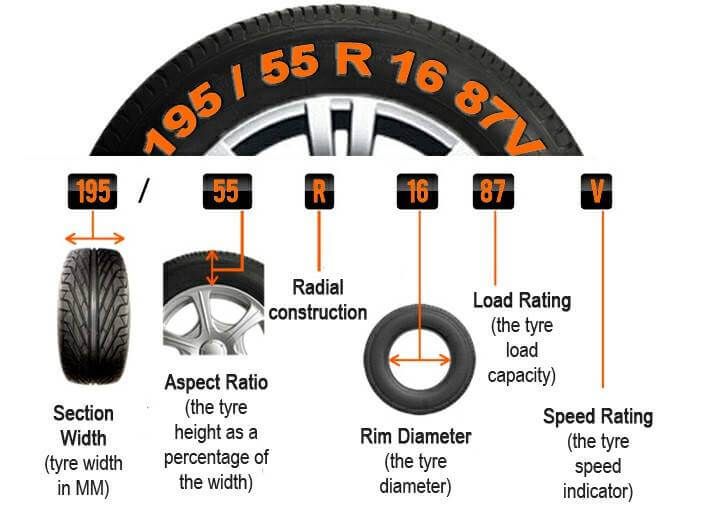
Tire experts and mechanics recommend them, especially if you own high-speed vehicles, because they provide more friction and have a shallower tread when the tire surface hits the tarmac.
Additionally, they are also perfect during rainy moments because they have shallower treads that push the water away.
Although these tires don’t last as long as all-season tires, they are the best option for Arizona because they are designed to provide the best grip when driving on hot pavements or in wet conditions.
All Season Tires
All-seasons are also ideal for some areas in the state which are different; they snow and are much cooler.
Therefore, if you are traveling to Northern Arizona, invest in a pair of all-season tires, where the weather has normal patterns.
All-season tires can be used in moderate snow and light rain until temperatures drop below 45 degrees.
All Terrain Tires
If you prefer to go off-road when exploring Arizona, you are better off with all-terrain tires. These tires are perfect for off-road enthusiasts who own SUVs and crossovers and like driving on rough terrains.
These tires are perfect for off-road enthusiasts who own SUVs and crossovers and like driving on rough terrains.
Additionally, these tires have very deep treads with great traction and grip.
If you are wondering whether it snows in Arizona, yes, it does.
While most of the places are hot, there are areas such as Flagstaff, Sedona, Prescott, and Pinetop that actually snow.
Most drivers have the all-season tire because it can go for more than one season. However, it’s still advisable to switch to winter tires when the temperatures drop below 45°F.
Regular tires become stiff when the temperatures go below this, reducing the traction and grip on the road.
Therefore, if you are driving through an area where temperatures are this low, consider changing all your tires to winter tires.
Additionally, ensure that your snow tires have enough tread depth to avoid skidding or getting stuck on the road.
If you are mostly driving on highways and in areas where the temperatures are cooler, all-season tires are ideal because they can handle more than one season.
Unlike the all-terrain tires suited for larger vehicles, these tires are ideal for most passenger cars and come in all sizes for all types of vehicles.
With these tires, you’ll get good traction on both dry and wet roads; therefore, you only need to switch when the temperatures are too high or too low.
All car owners would like their tires to last longer. However, if you are in a hot area, like Arizona, what are key factors to consider when purchasing tires? Let’s take a look.
Type Of Tire
Tires are very different and are designed for particular weather seasons. When shopping, you need to confirm whether summer, winter, all-season, or all-terrain tires will suit you best.
For instance, summer tires are meant for hot climates, winter tires for snow conditions, all-terrain for off-road driving, and all seasons for dry and wet roads. You should buy a tire that works best for the roads in your location.
Inflation
Passenger tires often have a PSI of 30-35, while others have different pressure levels. If you are driving in Arizona, ensure that your tire is not overinflated or underinflated; otherwise, you could easily get a puncture or a tire blowout.
A hot tire is very risky if the tire pressure level is not correct.
Tire Treads
Check your tire treads to confirm that they are still within the legal limit. If your tires are bald on the hot asphalt, you increase your chances of having a blowout or an accident. Therefore, before traveling, always check the tread.
To know more about tires, you can also read our posts on how long do summer tires last, how long do tires last in Florida, and how common are flat tires.
In Arizona, the weather is primarily hot and dry; therefore, you need tires that can handle these types of conditions.
On average, the tires can last up to 40,000 miles which is two to three years. However, this depends on individual use and tire maintenance.
However, this depends on individual use and tire maintenance.
Although most of the state is hot, keep in mind that Arizona experiences four seasons and some parts are much cooler; therefore, you might need winter tires when the temperatures hit below 45 degrees.
This entry was posted in Car Maintenance and tagged Tires, Vehicle Safety on by Red Mountain Funding.
Spread the love
Disclaimer: Some links on this page are affiliate links. We may receive a commission if you make a purchase through these links. See our full disclaimer here.
It doesn’t matter what time of year it happens. You could be on the way to the grocery store, picking up the kids from school, or on the I-17 freeway heading north going 75 miles per hour at 3:43 pm hoping to beat the afternoon rush hour traffic. And then, out of nowhere, boom! You hear that thud, thud, thud every second or so with the tire rotation as the point of contact churns over on the asphalt and that’s when you know – you’ve got a flat. But here’s the reality of the situation. Unless you’ve run over a nail or screw (thanks to the good economy and new construction), neglect or poor maintenance may have a hand in time spent at the side of the road. Prevention is key, and knowing whether seasonal tires in Arizona are the best option all year round is worth a discussion.
But here’s the reality of the situation. Unless you’ve run over a nail or screw (thanks to the good economy and new construction), neglect or poor maintenance may have a hand in time spent at the side of the road. Prevention is key, and knowing whether seasonal tires in Arizona are the best option all year round is worth a discussion.
One of the more frustrating aspects about having to replace a tire is that it’s never just one tire. Unless, you’ve had the unfortunate circumstance of replacing two or four tires at once and then getting a flat within a short amount of time after that, getting one new tire puts you and your vehicle at risk. It’s all about the tread. But how a tire wears during the extreme temperatures in an Arizona summer are very different to what’s important during a trip to Sedona or Flagstaff in January. We’re talking polar opposites here. So how do you determine which tire is best without blowing your bank account to shreds?
The best tires for your vehicle, should you drive in Phoenix, its surrounding areas, Tucson or in the high country near the Rim, require a multitude of must-haves in order to preserve the life of the car or truck and better ensure your safety on the road.
What to Consider When Buying Tires in Arizona
Many people are quick to think that because Arizona doesn’t really have four seasons in the sense that other areas of the country do, tire tread doesn’t undergo the challenges that the Northeasterners or Midwesterners go through. This is a misnomer. Ever notice how many pieces of once-perfectly-good-rubber meets the road to its-death on Arizona freeways from May through September? Heat plays a dire role on the health of tire tread, which is why an all season tire in Arizona carries a lot of merit.
As a rule of thumb – less cost means less tread and that’s a dangerous choice.
Not all tires will wear the same. The front tires are often thrown out of alignment from banging a curb or two. (Who does that?) Misalignment and imbalance will put additional stress on all the tires, accelerating wear and tear.
(Who does that?) Misalignment and imbalance will put additional stress on all the tires, accelerating wear and tear.
Even if only one tire needs to be replaced, say the front tire, to keep all tires working optimally and providing the most stability and life of the tires, two tires (one for the right side and one for the left) will need to be replaced. In addition, both new tires should be placed in the rear (if possible) as they affect overall stability.
When choosing between an all season tire and a winter tire, there’s a fine balance in determining how much grip you’re getting for the price. Often times, when looking for tire replacements, it’s easy to get enamored by the brand name or intricate groove patterns on the rubber.
What is important to take note of in winter and seasonal tires include:
Just because your first set of tires had a life expectancy of 50,000 miles, doesn’t mean that all tires carry the same longevity. Some are 20,000 miles. It depends on how long you plan on owning the vehicle and how often you drive.
Some are 20,000 miles. It depends on how long you plan on owning the vehicle and how often you drive.
It’s also important to stay with ‘of like kind’. When possible, replace an existing tire with the same make, model and size of the other tires. If you want to change the brand or model, talk to a tire specialist who can match size for size and performance metrics. Weigh the cost for replacement and the tire life expectancy to map out whether a change from the original is worth it long term.
For Arizonans, the decision on which tire is the right buy is based on many variables.
One of the best aspects of living in or visiting Arizona is the diversity of terrain and temperature. If you plan on hitting the slopes during the winter and spring seasons, the right tire is essential to ensure that the rubber meets the road optimally no matter the situation (snow, sleet, ice, dirt).
Unless your pocketbook has an endless supply of disposable funds, an all season tire is the way to on the road bliss in Arizona, providing the right amount of traction in a variety of conditions for the long haul.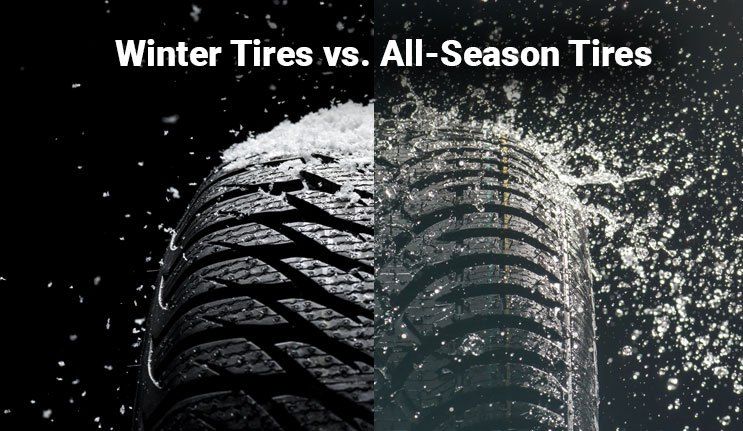 There are even performance all season tires for higher end vehicles such as BMW, Porsche, Ford Mustang, and Audi TT or R8, just to name a few.
There are even performance all season tires for higher end vehicles such as BMW, Porsche, Ford Mustang, and Audi TT or R8, just to name a few.
Top 5 Recommended All Season Tires
1. Cooper Discoverer A/T3
2. BF Goodrich Rugged Trail T/A
3. Michelin Primacy MXM4
4. BF Goodrich g-Force COMP-2 A/S
5. Hankook Optimo H727
Before You Buy Any Vehicle, Make Sure to Look at the Tires before Purchasing
Consumer disputes over the age of tires have not subsided for several seasons. Buyers are excited that the warranty period for tires is limited to 5-6 years according to GOST, and after the expiration of this period, the rubber becomes unusable.
Is this really the case, read this article.
Manufacturers of most brands on their products set Shelf life is 5 years and service life is also 5 years .
The shelf life of a tire is the period during which it retains its performance when properly stored.
The end of this period does not mean that the tires have become unusable . A shelf life of 5 years is given by manufacturers because, by law, they cannot set a shelf life higher than the service life. Tires over 5 years of storage cannot be called damaged or defective, their technical characteristics may be slightly reduced. American researchers argue that the period of storage of "shoes" must be at least 10 years. Experts from Germany are sure that it cannot exceed 6 years.
The expiration date of tires is the warranty period during which the manufacturer is responsible for the quality and condition of the tire if it was used for its intended purpose without violating the operating rules.
According to Russian legislation (GOST 5513, GOST 4754-97) , the service life of tires is 5 years from the date of manufacture.
How can I find out the date of manufacture of tires?
You can find out the age of tires by a special DOT code.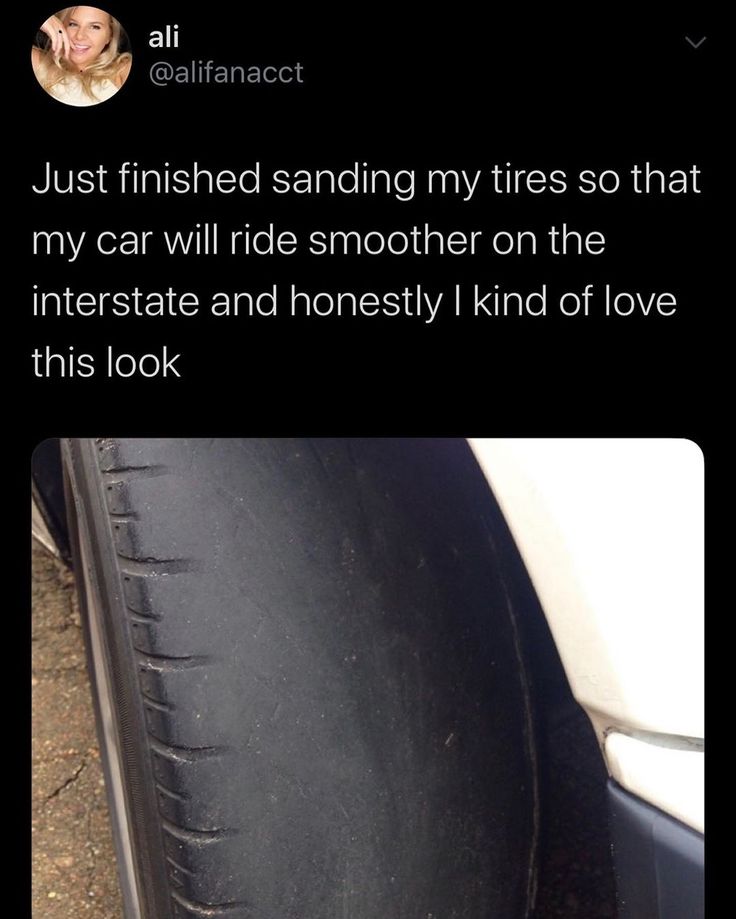 Tires manufactured after 2000 in the DOT code contain two pairs of numbers, where the first pair indicates the week number of the year, and the second pair indicates the year. Earlier tires before 2000 have 3 numbers in their composition, where the first two digits are the week number, and the last one is the year (see the transcript in the photo).
Tires manufactured after 2000 in the DOT code contain two pairs of numbers, where the first pair indicates the week number of the year, and the second pair indicates the year. Earlier tires before 2000 have 3 numbers in their composition, where the first two digits are the week number, and the last one is the year (see the transcript in the photo).
Determination of the average shelf life of a tire according to GOST and operating conditions.
- The symbol ZR denotes tires for high-speed cars. They are recommended to be used at speeds over 240 km/h. up to 6 years
- Tires with the H symbol are used at a maximum speed of 210 km/h. within 5 years.
- The sign S symbolizes the maximum permissible speed of 180 km/h. and operational period of 4-5 years.
Most tire manufacturers do not agree that tire life is limited to 5 years. Each company has its own opinion on this matter. We analyzed several of them and the information they posted on their official websites.
We analyzed several of them and the information they posted on their official websites.
Michelin
The French tire manufacturer Michelin has become famous for its active fight against the perception of the rapid aging of tires as a perishable product. Her information campaign "Tires Are Not Bananas" created a lot of noise in the automotive environment. According to the representative office, several test trials were carried out in Saudi Arabia, South Korea and Germany. As a result of testing, no difference was found between new tires and tires stored for 3 years. They were tested for various characteristics such as rolling resistance, high speed durability, etc. Tires with a year life were approximately equal in performance to 10-year unused tyres.
Michelin focuses the attention of car owners on the fact that tires are not a perishable product, their shelf life is not as important as the service life is important, starting from the date the tires are installed on the rims. It is from this moment that the tire is subjected to all tests: pressure, temperature changes, wear, contact with uneven and sharp coatings, etc.
It is from this moment that the tire is subjected to all tests: pressure, temperature changes, wear, contact with uneven and sharp coatings, etc.
Continental
On the Russian official website of Continental, we found the following information on the expiration dates of tires.
“When a tire is stored in the correct position and under the recommended conditions, it will not lose its original balanced performance for 5 years from the date of manufacture of the tire.
A properly maintained, unused tire less than 5 years old can be sold as a new tire and used normally.
Continental recommends replacing all tires (including spares) with a sidewall date greater than 10 years.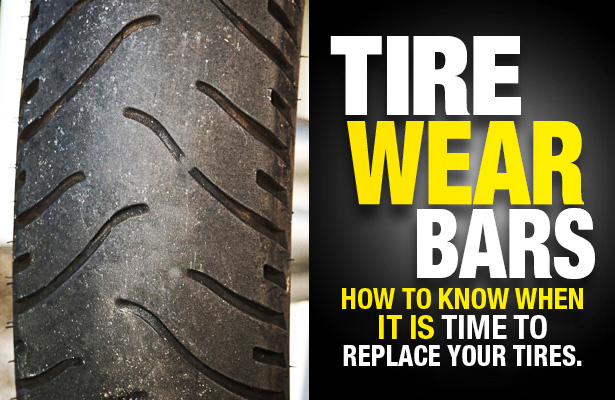
Nokian
The following information is posted on the Nokian official website:
“Tire life is not defined by law, but tires can only be considered “new” if they have been manufactured within the last five years. The recommended service life of tires is six years and the recommended maximum period is 10 years.
The opinion of our specialists, based on many years of experience, coincides with the opinion of manufacturers: the shelf life is 5 years + the service life is up to 10 years. Moreover, more "adult" tires, in our opinion, are of better quality.
To keep tires as long as possible, they are stored in compliance with all rules and recommendations. The main condition is a cool, ventilated, darkened room away from oils, paints, ozone, and heat sources.
Rubber products tend to lose their performance over the years. To prevent and slow down this process, manufacturers add polymers to the rubber compound. They prevent oxidative processes that occur due to the interaction of protectors with oxygen and ozone.
They prevent oxidative processes that occur due to the interaction of protectors with oxygen and ozone.
The following are the main conditions for the proper storage of tires in accordance with GOST 24779-81:
Maintaining a constant regime without sudden jumps, slight temperature fluctuations from -30°С to +35°С are allowed;
Provide a low humidity level of 50-80% in a dry, ventilated cool room;
Avoid direct sunlight, use darkened hangars, shield heat sources;
Keep away from sources of heat;
Tires should not come into contact with corrosive, copper materials.
Avoid kinking, loading or positioning on an uneven surface.
Avoid contact with oils, organic solvents, acids, alkalis, fuels and lubricants on the tire surface. It is forbidden to lay tires on a wet and dirty surface.
In the warm season, when storing tires outside, they should be covered with light-tight material and raised above ground level to ensure ventilation and prevent the occurrence of the greenhouse effect.
Storage on reflective, light and heat absorbing surfaces is prohibited.
Keep away from chemicals, oils, paints, open flames, electric motors that produce ozone.
Used tires must be washed and dried.
Tires without rims should be stored upright.
The service life depends on many factors: the load on the car, the quality of the roads, the driving style, the distance traveled, tire damage, etc. To increase their service life, follow these rules:
Check tire pressure every 2-3 weeks. With reduced pressure, tire wear increases by the equivalent of a % reduction. For example, a 15% reduction in pressure can result in a 15% reduction in service life. Inflated tires are less scary.
The wear of the front tires is always significantly higher than the rear ones, so it is recommended to swap them after some time, carefully watching the direction of the tread pattern and the direction of rotation.
Proper alignment of tires in relation to rims. If the direction is not the same, then performance is significantly reduced.
To prevent damage to the sidewalls of tires, avoid close proximity to curbs and high ledges.
Wash off dirt from the surface of the rubber and from deep grooves with special cleaning agents.
Adhere to an even driving style without harsh brakes and quick starts.
Do not overload the car beyond the norm. 20% excess weight leads to a 30% loss of tire life.
Keep the wheels balanced and check the alignment angles annually.
The main condition for a long tire life is:
- high quality products,
- careful operation,
- proper storage of tires in the off-season,
- timely diagnosis.
The age of tires in standard storage is a minor non-determining factor that should not be taken into account when buying them.
Previous article Next article
A car tire is a rubber elastic shell that is mounted on a disc rim. It is she who is in direct contact with the surface of the roadway and is directly designed to reduce small fluctuations on the roads, as well as to compensate for flaws in the trajectory of the wheels. During operation, it is subjected to heavy loads of a diverse nature, therefore it naturally has its own service life, which is influenced by a number of factors.
Shelf life - the period during which the company guarantees the possibility of using the product for its intended purpose and is fully responsible for defects that arose through its fault.
When buying tires, you need to look so that no more than three years have passed from the moment of production. The date of manufacture and any other information is very easy to find out, it is indicated on the tire label among the general information about dimensions, design, speed and load ratings.
Tire production date
Russian legislation establishes the service life of car tires under warranty in accordance with GOST 4754-97 and GOST 5513 - 5 years from the date of manufacture, but for tires, first of all, the main indicator is the quality of the product, and not the time of its use.
According to GOST, the average tire life should be calculated in the following order:
Experts recommend replacing tires before they reach their expiration date. Some motorists believe that rubber is suitable if it is rarely used, and at the same time its age is already 5-6 years old, but this is an erroneous opinion! Indeed, due to the fact that defects appear in tires during operation and storage, they are associated with its oxidation and cracking - at a critical moment, it can let you down.
Shelf life is a certain period during which the product, subject to the established rules of storage and operation, must retain all its properties. If the shelf life has expired, this does not mean at all that the product is unsuitable for use, but its technical characteristics may decrease.
Tires can age through physical and chemical processes, this hypothesis applies to tires that are not used or little used. To prevent the aging process itself, special substances are added to the rubber compound that help counteract harmful chemical compounds with oxygen and ozone. Doing so will ensure that, when stored properly, the tire will meet the definition of a new tyre.
It should be noted that the warranty shelf life is not the service life of . The storage period for five years is set, not because the tire will deteriorate after that, but because, according to the law, the manufacturer does not have the right to establish a shorter warranty period, which is protection for the end user.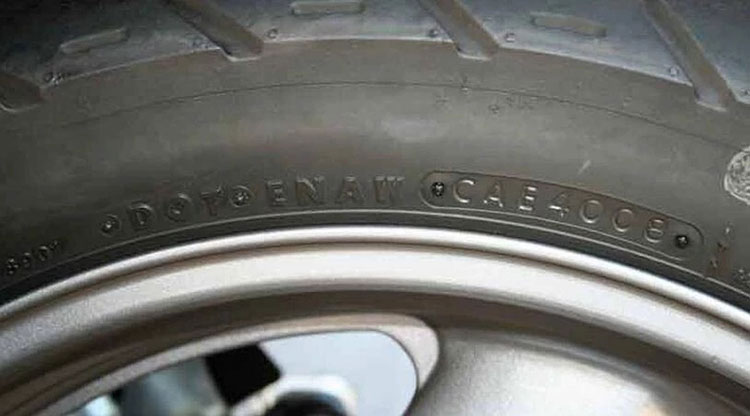
In recent years, many American experts believe that the shelf life and operation of car tires should be limited to 10 years. In turn, German experts believe that the expiration date of tires should be limited to 6 years, this also applies to new tires.
Rules and regulations for the storage of pneumatic tires according to GOST 24779-81:
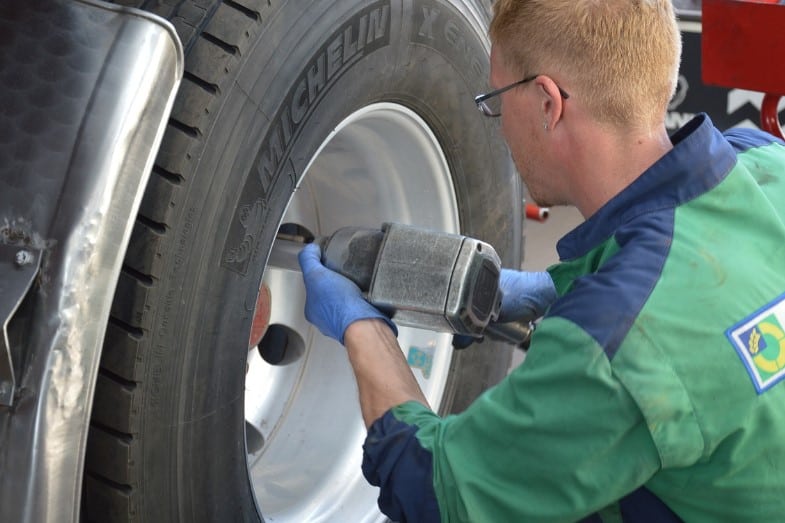

For a complete list of rules and recommendations for proper tire storage, see the article “How to store car tires”.
Well-known brands of imported tires, such as: Bridgestone, Michelin, Goodyear and Dunlop last up to 10 years or more from the date of manufacture, this period is generally accepted throughout the world. But the total shelf life and storage in the warehouse, from the date of issue, tires Continental is no more than 5 years.
Although, as we have already figured out, the storage conditions of tires mean a lot, not only new ones, but also those that were removed from the car until the next season. For example, nokian tire expiration date ranges from 3-5 years, subject to verification at least 1 time per year, after 5 years of use.
Unfortunately, the legislation does not establish the permissible storage periods for tires in a warehouse, but experts believe that a tire that has lain there for about 5 years is still equal to a new one.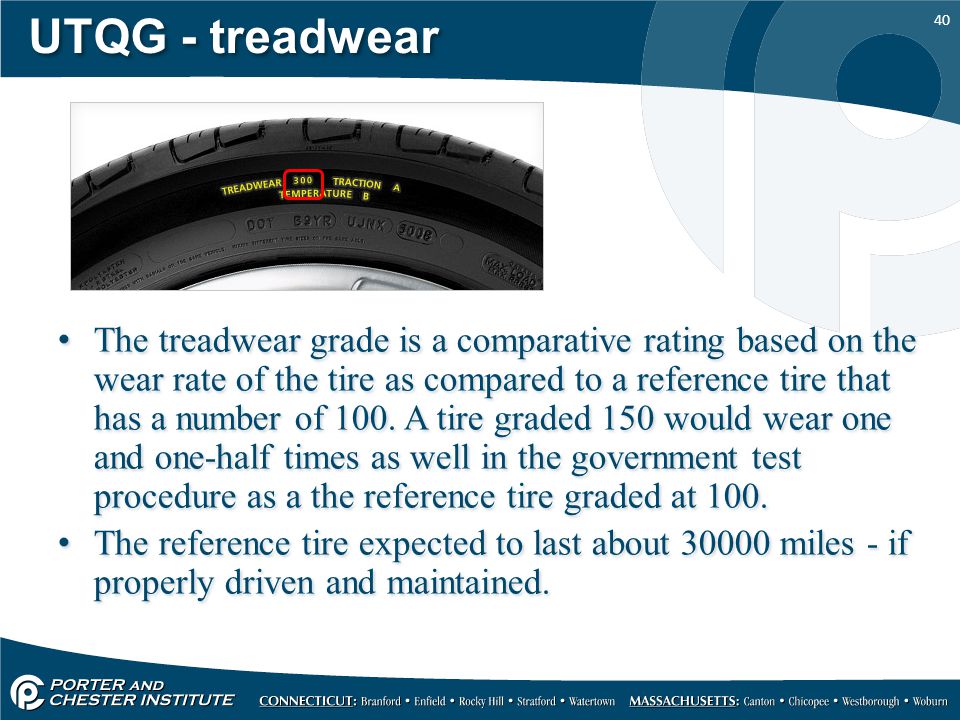
The tire life of a vehicle is the period of time during which the manufacturer gives a guarantee for tires and is fully responsible for any defects that will be detected during their operation. According to manufacturers, tires should last at least ten years, although in practice they have to be replaced approximately every 5-6 years, in some cases even less.
There are many different factors that affect the wear of car tires, the main ones are listed below:
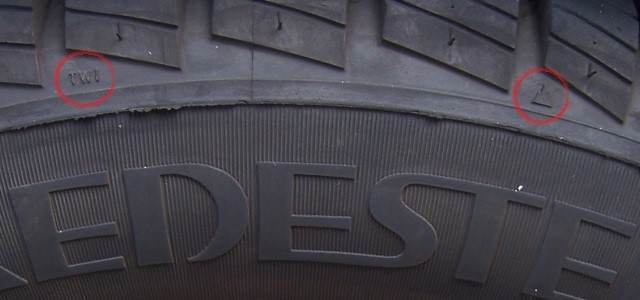
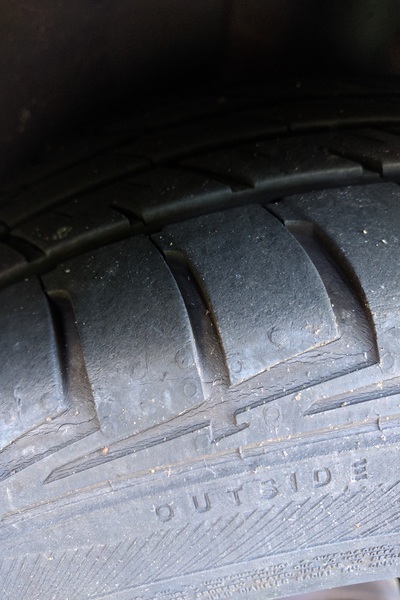
Next, let's take a closer look at the instructions for certain actions that need to be taken in case of wear on car tires.
When diagnosing tires, in addition to the fact that it is imperative to pay attention to the degree of wear, there are also other equally important factors indicating the end of the service life.
In order to determine when the life of car tires ends with a detailed inspection, you need to pay attention to the following points:
 For summer tires, this parameter should be equal to more than 1.6 mm, in turn, for winter tires - more than 4 mm. If these parameters are less, then it is necessary to replace the tires. When the wear is uneven, then measurements should be taken in the area where the wear is most visible. Otherwise, if the tread edge is worn on only one side, then the camber-toe angle has been violated.
For summer tires, this parameter should be equal to more than 1.6 mm, in turn, for winter tires - more than 4 mm. If these parameters are less, then it is necessary to replace the tires. When the wear is uneven, then measurements should be taken in the area where the wear is most visible. Otherwise, if the tread edge is worn on only one side, then the camber-toe angle has been violated. 
When any defects were noticed in the tires, it is recommended to carry out a replacement, and not a rescue restoration, in order to somehow extend the period of use.
To prolong the life of car tires, it is necessary to periodically diagnose them.
In order to make your tires last longer, you need to follow certain rules of use:
Since there is always more wear on the front (driving) wheels, then every 10-15 times. thousand or at the time of changing seasonal tires, it is advisable to change it in places.
Swapping front tires to rear tires
Scheme of swapping 5 car wheels
Please note that although there are tires with directional and non-directional patterns, you still cannot change the direction of rotation of the wheel. And in the second option, the front wheels must be reboarded before being installed back.
And in the second option, the front wheels must be reboarded before being installed back.
It is necessary to check if the tires are installed correctly in relation to the rims, which is usually indicated on the sidewalls of the tires, this is important, since if the tires rotate in the opposite direction to the design, all their performance will be significantly reduced in all modes of operation of the car.
Non-directional tire replacement scheme
All-wheel drive tire replacement scheme

Experts recommend that you regularly check the condition of your tires, monitor pressure and tread wear. After all, it is much more profitable to fix a malfunction in the early stages than to change all the rubber later.